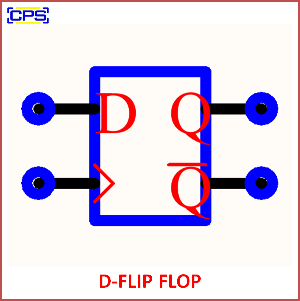A D flip-flop (Data or Delay flip-flop) is a type of digital storage element that captures and stores a binary value (0 or 1) on its output based on the input and a clock signal. It is one of the simplest and most commonly used flip-flops in sequential circuits.

Key Features of a D Flip-Flop:
- Input and Output:
- Input (D): The binary value to be stored.
- Output (Q): The stored value.
- Complementary Output (Q‾\overline{Q}Q): The inverse of the stored value.
- Clock Signal:
- The output changes only on the edge (rising or falling) of the clock signal.
- Functionality:
- At each clock pulse, the value of the D input is transferred to the Q output.
Truth Table:
| Clock Edge | DDD | QQQ (Next State) |
|---|---|---|
| Rising/Falling | 0 | 0 |
| Rising/Falling | 1 | 1 |
Applications:
- Data Storage: Stores a single bit of data in sequential circuits.
- Registers: Used in shift registers and data buffers.
- Counters: Forms the building block of binary counters.
- Control Systems: Synchronizes data with the clock signal.
The D flip-flop is valued for its simplicity and predictability, making it an essential component in digital logic design and memory systems.
